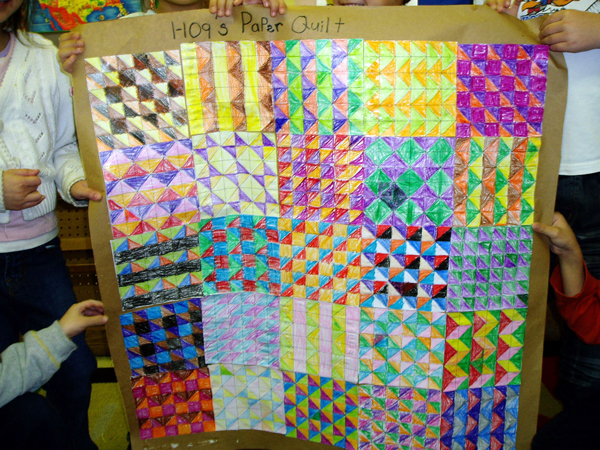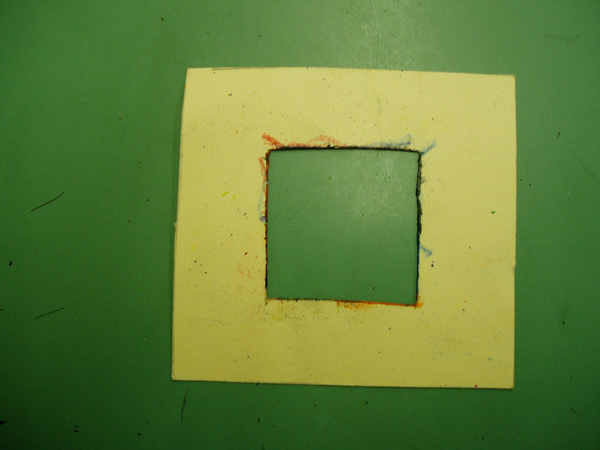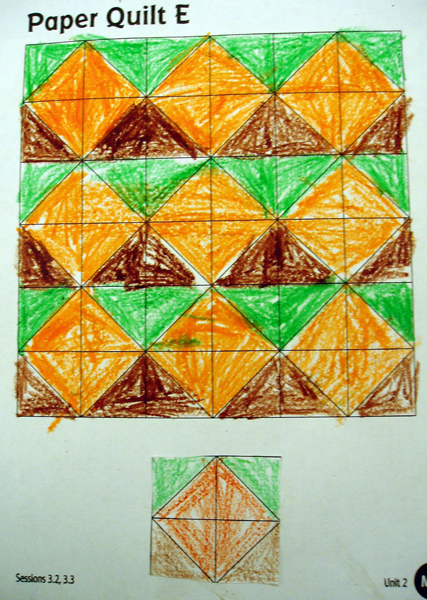The Keeping Quilt: Quilting Across the Curriculum
| Name: |
Johanna Rosenberg |
| School: |
PS 124M The Yung Wing School |
| Address: |
40 Division Street |
| City: |
New York, NY, 10002 |
| Original Project: |
The Keeping Quilt: Quilting Across the Curriculum |
| Author: |
Tracee Sudyka |
| URL: |
http://teachersnetwork.org/teachnet-lab/santab2003/tnetarchive/Tracee/quilts/
room30/quilts/sb_tracee_quilts.htm |
How did you modify this unit for use in your own classroom?: After searching the website for projects that go with my first grade curriculum, I found this one on quilting. I had to modify a few things because the original unit was designed for older students, plus I have a lot of ESL students in my class. I changed the text to Patchwork Island, by Karla Kuskin. This book was more appropriate for a first grade class that has ESL students. Before we began creating our quilts, we had many math sessions on comparing and describing shapes.
List your primary instructional objectives for your students.
| |
Using a previously created design to create a pattern. |
| |
Examining how shapes come together to make other shapes. |
| |
Seeing relationships between squares and triangles. |
| |
|
What role did technology play in this curriculum unit?: Students viewed examples of quilt squares on the web sites used in the original TeachNet unit. Students also used math programs such as Millie's Math House, published by Edmark, on the classroom computer during choice time to explore shapes.
How did you assess and evaluate student performance?: The students were assessed by their completed quilt. I had the following questions in mind when I was looking at their individual quilts: Did they replicate the original design accurately? Were they able to identify when they made a mistake and attempted to correct it? Did the students notice relationships between the squares and triangles?
Please tell us briefly about your background & teaching experience: For the past eight years Johanna Rosenberg has been teaching in the NYC Public School System. IShe has taught kindergarten and first grade. Ms. Rosenberg has a BS in History and Education, as well as, a MS in Elementary Education.
What are your recommendations for other teachers interested in adapting this unit?: My recommendation for teachers interested in adapting this unit would be to make sure students have a good foundation in shapes and their relationships to each other before creating the quilts. Also, make sure you allocate extra time in your schedule when students are creating their quilts. Some will finish much faster than others. Plus, I had a "quilt guider" available for my students to use when replicating their design on the quilt sheet. I made them out of oak tag. The quilt guider is made up of a square that is 4 inches by 4 inches. I then used a box cutter and cut out a small square in the middle that was 2 inches by 2 inches. That small square allows students to see a small part of the quilt (which their individual design fits into), making it easier for them to copy and not becoming overwhelmed with the whole quilt.
Samples of Student Projects
| |
Our class quilt! |
| |
 |
| |
|
| |
A quilt guider that I created to help the students when replicating their original quilt design onto the quilt paper. |
| |
 |
| |
|
| |
Paper Quilt |
| |
 |
|